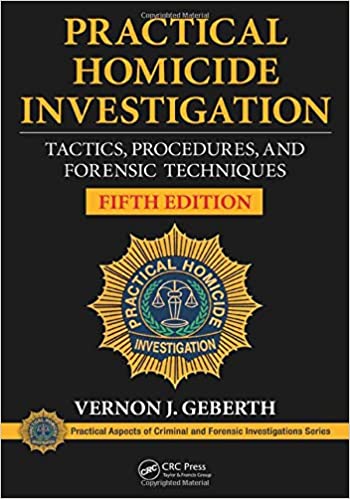Books

Considered the Bible of investigations. It covers everything from how to run a crime scene to forensics to autopsy. This book is used by to train cops, medical examiners, and others. It’s expensive but invaluable. WARNING! The book is not for the squeamish as it contains pictures of actual homicide victims, some of them with removed body parts. It’s a textbook, which makes it expensive.

The official FBI handbook. Each type of evidence is listed with a very brief description of how to collect it then how to package it up to send to the FBI lab.

Great book in the series. Gives you just enough information on processing a crime scene. The author also gives pointers on how to write about crime scenes.

Learn all about blood spatter…at least just enough to be accurate in your story.

Autopsies are an important part of any police procedural. Even more important if your hero is a coroner or medical examiner. This book gives you the just enough information to make your story sing with accuracy.

Part of the great Howdunit series. The author has worked as an expert for books and in Hollywood. This is a great reference, but beware that it was published in 2008 so some information, especially about DNA, may be outdated.

Also by D.P. Lyle, and published a year before the Howdunit book, you’ll find some good information to keep things accurate.

I met author Jennifer Dornbush, the daughter of a medical examiner, at the Idaho Writers Conference. She went to school to learn forensics specifically so she could write accurate novels and screenplays. This book came out of a school project. She spends one to two pages on each topic. It’s complete and pretty current.

The history of forensic science is outlined in this great book. If you’re interested in the history, I highly recommend reading this. Also applicable for historical mysteries so you know when a particular aspect of the science was first used.

On the surface, this book is about how Agatha Christie used forensics in her books. It’s all that and so much more. First there is the story behind Christie and forensics. Second there is a lot of forensics history. Need to know when fingerprints were first used? Or blood analysis? It’s in there. Third, how different forensic sciences are actually used. And finally, there are the true crime stories that influenced Christie’s writing and how many were solved with forensics. Hands down, one of the best forensics books I’ve ever read.
